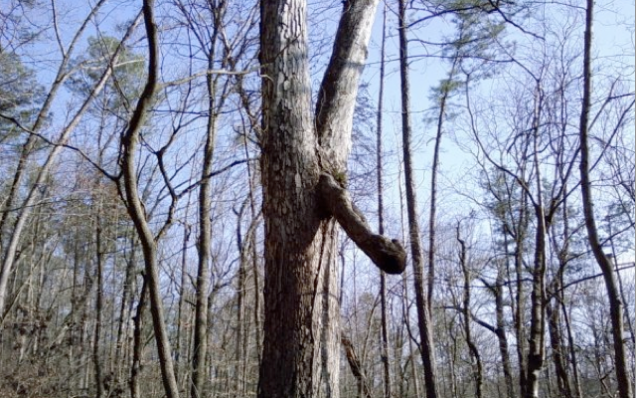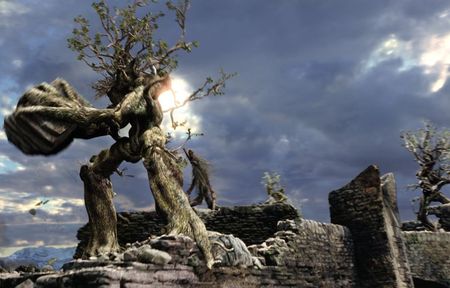What Would It Feel Like To Be A Plant?
Mancuso’s crew have brought back to light the foundational work on plant intelligence done by Charles Darwin and his son, who a century ago recognized the surprising intelligence of root tips. We can thank Mancuso’s crew especially for reminding the world a vivid metaphor first put forth by the Darwins to help us understand what it must be like for a plant. To quote from Michael Pollan’s excellent New Yorker article on plant intelligence:
The sensory capabilities of plant roots fascinated Charles Darwin, who in his later years became increasingly passionate about plants; he and his son Francis performed scores of ingenious experiments on plants. Many involved the root, or radicle, of young plants, which the Darwins demonstrated could sense light, moisture, gravity, pressure, and several other environmental qualities, and then determine the optimal trajectory for the root’s growth. The last sentence of Darwin’s 1880 book, “The Power of Movement in Plants,” has assumed scriptural authority for some plant neurobiologists: “It is hardly an exaggeration to say that the tip of the radicle . . . having the power of directing the movements of the adjoining parts, acts like the brain of one of the lower animals; the brain being seated within the anterior end of the body, receiving impressions from the sense organs and directing the several movements.” Darwin was asking us to think of the plant as a kind of upside-down animal, with its main sensory organs and “brain” on the bottom, underground, and its sexual organs on top.
Makes sense — the “brain” is really in the roots, so just as we humans place our sense of self in the head (in close proximity to multiple sensory inputs), any rudimentary sense of being that a plant might have would probably be centered in the roots and oppositely-oriented compared to us. In the words of Mancuso Mafia, “plants are evidently anchored in the soil by their ‘heads’, exposing their sexual organs to the air and to prospective pollinators.”
Sexy! It speaks to the bipolar arrangement of most of life, with sensory and cognitive decision-making at one end, reproductive and excretory business at the other end. It’s not a perfect metaphor, since it forces us to picture plants eating through their asses (CO2 and sunlight), but it’s surprising to realize that we’ve likely been anthropomorphizing our trees incorrectly all this time. (That’s a sentence I want to appear on my tombstone)
Imagine what it feels like to be a plant. First of all, turn yourself upside down and plant your head in the ground — you’re now “seeing” and “breathing” dirt, and your feet are dipping down into an airy “underground”. Your primary sensations are of chemical signals in the dirt, which you “see” as sources of food, or perhaps the chemical signatures given off by the roots of competing plants. Down at your feet you feel the heat of (but don’t see) the sun — which you perceive as nourishment. The soil is to you what the air is to us humans. You wouldn’t find it odd to have such a dense medium be your natural home, since that’s all you’ve known. This reminds me of a great writer (me) who once brought up a similar idea, in talking about rock-dwelling microbes, who live deep within the earth. They’re even less likely than a plant to achieve consciousness, but I thought it was cool to point out that a hypothetical multicellular creature to evolve down there would live and breathe rock, just as we live and breathe in air. Far from feeling squeezed between cracks in rocks, they’d feel rock to be their natural medium of existence.
And of course we have to make one more change if we want to put ourselves in the shoes of plants — we have to slow time waaaay down. We don’t know if plants have any real conscious sense of time, of course, but they’re clearly on a slower speed than us — for a plant, “motion” means growth — moving towards some food, moving away from a competitor, etc. The plant’s only choice is to grow, and so the timescale of animal motion just isn’t even on the plant’s radar. (Except for the couple of exceptions like the Venus Flytrap or Mimosa pudica, which must seem like superheroes to the rest of the plant world.)
I have a wild notion that if you could look at a time lapse video of trees growing over seriously long times, say years, that you would see them interact with each other in animal-like ways. For example, picture two trees growing a little too closely to each other — as they get bigger, they’ll compete for access to the sun, and perhaps over the years one tree might “push” the other out of the way. Sped up, years of tree growth might resemble two basketball players jostling for a rebound.
Cool idea, eh? Too bad I can’t really find anything like that. A time-lapse video of that kind of length would have needed to start decades ago, probably before video cameras were invented. But there are a few videos out there that show, at least on the timescale of months, how plants act surprisingly animal-like as they grow.
First of all, check out this hypnotizing video of a morning glory vine “hunting around” for a support stick to grow onto:
Whoa! Sure, that’s a plant, but wow does it look like it’s a conscious being, groping around for a handhold. (Or a leafhold).
There’s also several videos of the sunflower, which exhibits what’s called nutation (the term for movement in plants) to maintain orientation towards the sun:
Ready for something even spookier? Check out this video from Stefano Mancuso’s lab in Italy — we mentioned him back at the plant intelligence section. He has a video of bean sprouts searching for a pole to grow around (discussed further in this New Yorker article):
Finally, let’s look at the roots themselves — multiple reports suggest that roots exhibit an animal-like “crawling behavior” as they grow, and by gummit, it sure does look like it:
While my dreams of watching two oak trees having a slap-fight over the course of decades may never come to pass, it’s still pretty amazing to see these smaller-scale examples of recognizable, “intelligent”-looking behavior in plants, behavior we never notice because we don’t operate at the same timescale.
So, as we wind down this article on Secret Communication in the Plant World,
Further reading (or rather, viewing):
Neatorama’s “12 incredible time laps plant growth videos”




 Follow Timeblimp on Twitter
Follow Timeblimp on Twitter